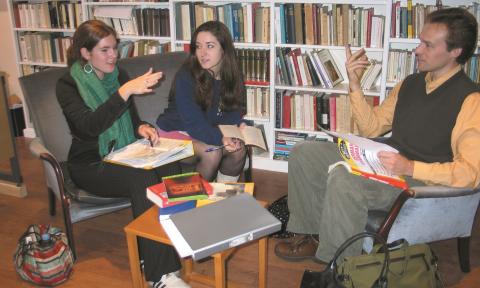Yiddish is the language of Ashkenazi Jews (that is, Jews whose ancestry hails from Central and Eastern Europe), which was spoken by approximately thirteen million people before World War 2. Its origins date back to the eleventh century when Jews settled in German-speaking lands and came to speak a language that fused elements from Middle High German dialects with Hebrew-Aramaic and Romance. With the eastward migration of Jews in the Middle Ages, Yiddish was transplanted on to Slavic soil, adding Slavic into the mix of languages that shaped the structure and form of Yiddish.
For many centuries, Yiddish defined Jewish existence in Central and Eastern Europe as well as in those New World countries to which Jews emigrated. It was the language not only of the home, but also of a rich literary culture which, like Yiddish itself, combined Jewish motifs and content with European form. Classics of Yiddish literature include the works of Sholem Aleichem (the pen-name of Sholem Rabinowitz, 1859-1916), whose Tevye stories are known to a general audience as the basis for the musical ‘Fiddler on the Roof’, and Isaac Bashevis Singer (1904-1991), who became to only Yiddish writer to be awarded the Nobel Prize for Literature in 1978.
The secularisation of Jewish culture at the end of the nineteenth century transformed Yiddish also into a symbol of Jewish nationalism and socialism. While the Nazis’ mass murder and the Stalinist persecution of Jews killed the bulk of Yiddish speakers and destroyed much of Yiddish culture and society, Yiddish is by no means a dead language. It is a native language for many Hasidic and ultra-Orthodox Jews, and is increasingly studied and embraced as a foreign language by Jews and non-Jews alike who wish to gain an understanding of the European Jewish experience and explore the cultural and literary traditions of a language that has always transcended national borders.

Undergraduate Studies

Graduate Studies

Research